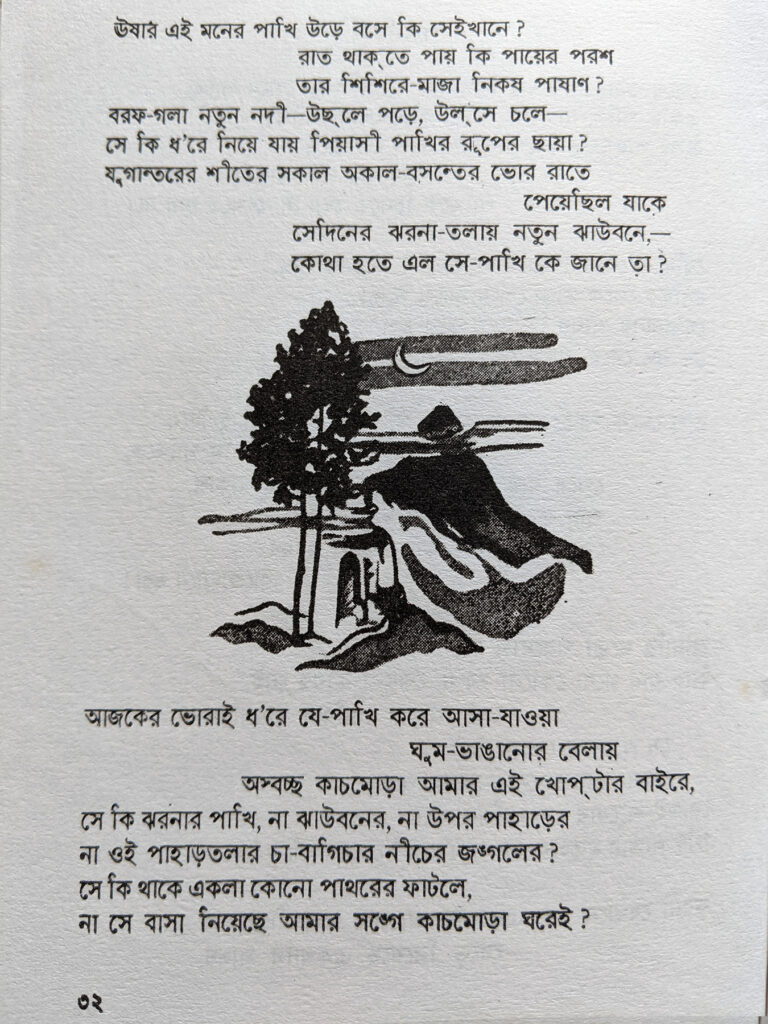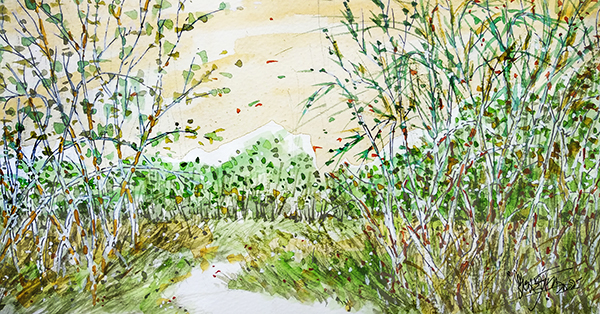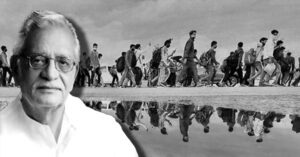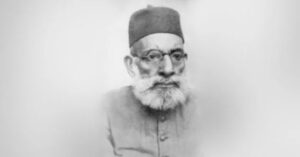“Pahariya”
The hills always point northwards,’ he says. My nephew has begun drawing mountains. He did not care for them until a few months ago. When he was little, and just beginning to enter our languages, we would point to the Himalayas and tell him the word in Bangla: ‘Pahar’. His world then was a tiny procession of nouns. Those that were unfamiliar fell behind in the queue. He mispronounced it always: ‘Power,’ he’d say, or something close to it. He didn’t know what ‘power’ was, of course. Like the mountains, the word was pushed to the background of his consciousness.
The mountains became the equivalent of his parents and grandparents – his mind was too busy to pay them attention.
At a time when he is looking for the equivalent of the living world from the learning in his textbooks, like when he asks to plant mustard seeds so that he can see the yellow flowers that has been promised to him by the illustrations in his science book, he seems to be moving in the opposite direction when he comes to the mountains. He is bringing the mountains to his drawing book.
When he draws the hills, making one line recline against another, doing far less work than the earth needs to raise a mountain, he invites the Himalayas home, home on to his drawing book. This is perhaps because over the last one year, the mountains have moved away from our lives, those who live in the foothills. The mountain is now only a distant relative. But not in my nephew’s drawings, where the mountains are the subject, not background as they were in my childhood drawings. What has changed? I wonder.
One day, I take the book to him – this book about someone who spoke and drew what he saw as he walked up the mountains, to the same places that we would see from our car, some of which we would stop by, less out of necessity and more from habit, like one stops in front of one’s house without passing it by, because of an invisible glue that makes the bicycle brakes clench to a stop. I’ve tried reading other things by this favourite artist to the little boy before – I’d begun with the astonishing Jorasankor Dharey – but I’ve not been able to get his attention.
Hawabawdol O Onnanyo Rachona (Change of Air and Other Essays). Abanindranath Tagore gives a quiet subtitle to the book: ‘Shawbdochitro’. He doesn’t hyphenate the word – they don’t exist separately for him. And hence the aesthetic and form of the book itself – word and image coexist without any hierarchy or even self-consciousness. After a sketch of a mountain range, below which sits the title and subtitle as if they were the foothills themselves, we are given a section full of short entries about nouns. I emphasise nouns – it reminds me of my nephew’s consuming the world through nouns. Abanindranath is taking us on a journey from Calcutta to the Darjeeling hills about a hundred years ago.
Sealdah. EBSR. Shahortoli. Padma. Jalpaiguri. Siliguri. Sukna. Suknar Jungle. Bonopath. Teesta. Pahartoli. Parbat. Resh. Jharna. Diwali.
These are the titles of the entries. The one on ‘parbat’ (mountain) and ‘Diwali’ are the longest. They are in prose, in Abanindranath’s irreplicable prose, its onomatopoeia-suffused body always moist with the energy of wonder.
Poems arrive in the second section almost all on a sudden, like the scene changes in a train window every second as it moves through the hills. Abanindranath calls them ‘Godyochhando’ – he draws two slim conifers; embracing them are a blur of clouds. There’s something about this drawing that makes me feel cold as I show it to my nephew in the early summer heat of Siliguri. The first poem is ‘Pahariya’, and its music comes from Abanindranath’s unique use of the sounds of Bangla, so that we experience, through its varying rhythms and breathing pace, how it feels to climb up the mountains. Now and then he pauses, like a traveller (he is honest: he calls himself ‘parodeshi’, an outsider) getting back his breath, and notes the difference of the mountains of northern Bengal from others: ‘Uttor-paharer nishaash-montro’, the breath-mantra of the northern hills; after the ‘jharna’, the ‘thin garland of light’ that he likens the waterfall to, and the ‘jhaubon’, the forest of conifers, he, tired with words, gives it up midway through the poem, to this drawing:

Words are insufficient, and so he must show us the light (‘gharer koney kacher budbudey dhawra nibhonto-bati’, the fading lamp caught in a bubble of glass in the corner of a room) and its disappearance. The ‘j’ sounds trail us all through the poem: jharna, jhaubon, jongol. When I pointed this out to the little boy, my nephew reminded me of our visit to a forest nearby and the incessant jhi-jhi sounds of crickets there. Was it that sound that Abanindranath was trying to recreate?
As we moved through the pages of the book, looking at the drawings and not always reading the words because of the boy’s restlessness, meeting branches of trees and clouds and women standing and sitting beside a stream, I wanted to tell him that this was one of the ways in which north Bengal might be ‘written’ – in a book whose genre is left undefined, moving as it does between poetry and prose, words and image, where the reader can graze or pause or read, like one walks up the mountains to Tindaria.






